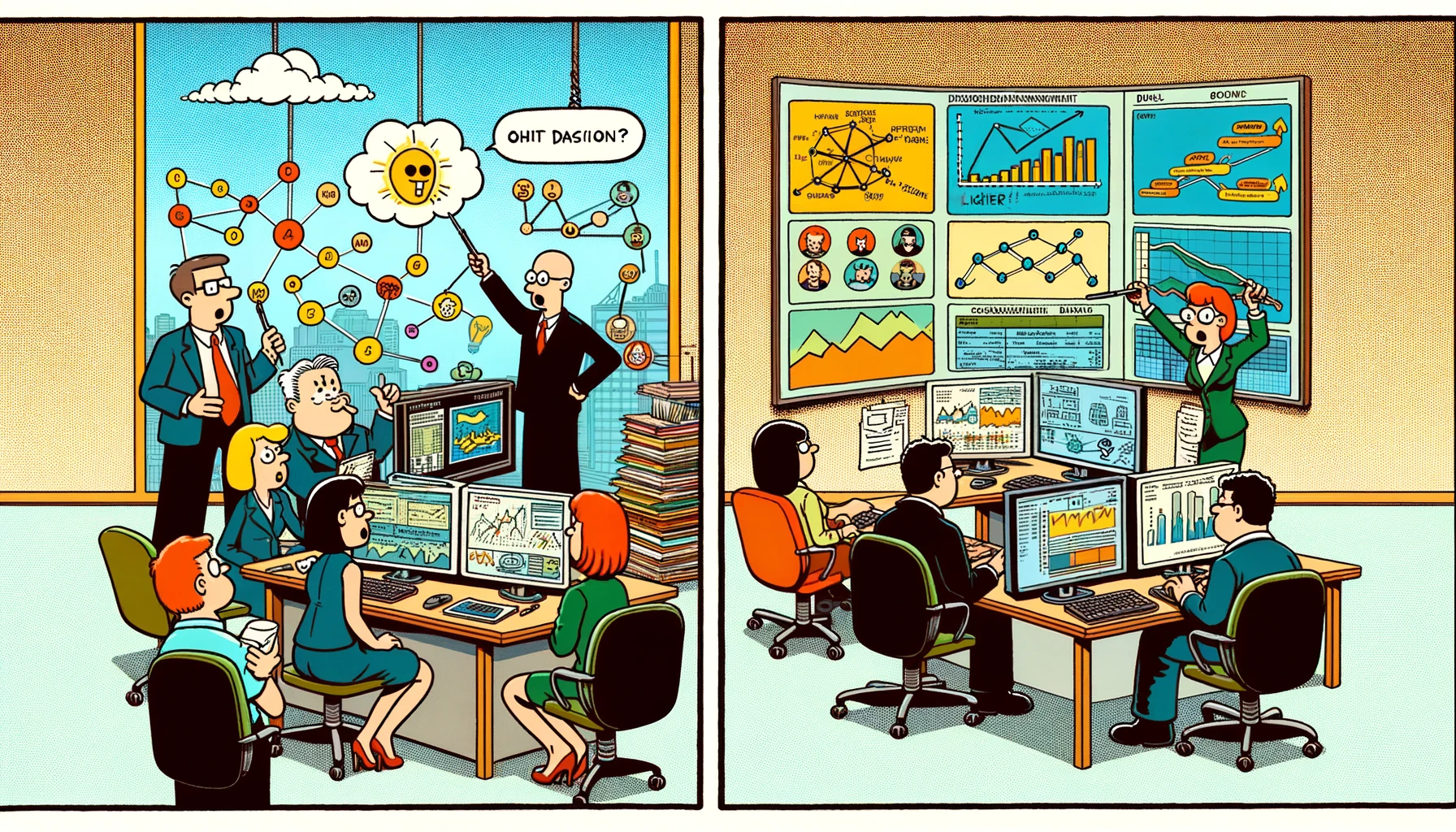
Blog post
Productive Performance Conversations: A New Lens Through Organizational Network Analysis
Leverage Organizational Network Analysis to supercharge performance conversations.

The Core Issue
In the modern organizational landscape, the traditional methods of evaluating employee performance have shown cracks. The old-school performance reviews, primarily carried out by managers, often suffer from biases and a lack of holistic understanding of an employee's impact and behavioral dynamics within a team or broader network. Given that 15% of employees create 50% of the impact in any organization, identifying and nurturing these individuals is critical. Similarly, addressing the 5% who cause 50% of the problems is equally crucial.
Significance of the Problem
The crux of the issue lies in the outdated performance review systems. These systems, rooted in a hundred-year-old methodology, fail to capture the essence of an employee's contributions and challenges in a networked working environment. This lack of visibility and understanding leads to misjudgments, affecting employee morale, retention, and ultimately, organizational productivity.
The Solution: Organizational Network Analysis (ONA)
Organizational Network Analysis (ONA) emerges as a potent tool to revamp how performance conversations are conducted. By analyzing the relationships and interactions among employees, ONA provides a clearer picture of an individual's impact, the problems they might be facing, and their influence within the organizational network.
Scenario 1: Positive View by Both Manager and Network
Consider an employee, Emma, who is seen positively by both her manager and her network. She is a go-to person for advice and consistently delivers quality work. The ONA data supports the manager's positive assessment, reinforcing Emma's value to the team and the broader organization.
Scenario 2: Negative View by Both Manager and Network
On the flip side, an employee, Tom, who is viewed negatively by both his manager and network, may be struggling with teamwork and missing deadlines. The ONA data reveals Tom's isolation and lack of engagement with his peers, providing a basis for a constructive conversation on improving his collaborative skills and time management.
Scenario 3: Positive View by Manager, Negative by Network
Now, imagine an employee, Sarah, who is seen positively by her manager but negatively by her network. While her manager appreciates her individual contributions, the ONA data might reveal a lack of cooperation or possible friction with her peers. The manager, armed with this insight, could provide constructive feedback on enhancing her teamwork and interpersonal skills.
Scenario 4: Negative View by Manager, Positive by Network
Lastly, an employee, Jack, might be seen negatively by his manager due to a lack of visibility on his projects, but is valued by his network for his helpfulness and problem-solving skills. The ONA data can help the manager recognize Jack's contributions, leading to a more balanced and informed performance conversation.
Conclusion
The integration of Organizational Network Analysis (ONA) in performance conversations is a game-changing approach that can significantly enhance the accuracy and productivity of these discussions. By bridging the gap between a manager's perception and the collective network insight, ONA fosters a more nuanced, data-driven, and constructive feedback culture.
Latest posts

Ready to see Confirm in Action?
See why forward-thinking enterprises use Confirm to make fairer, faster talent decisions and build high-performing teams.









